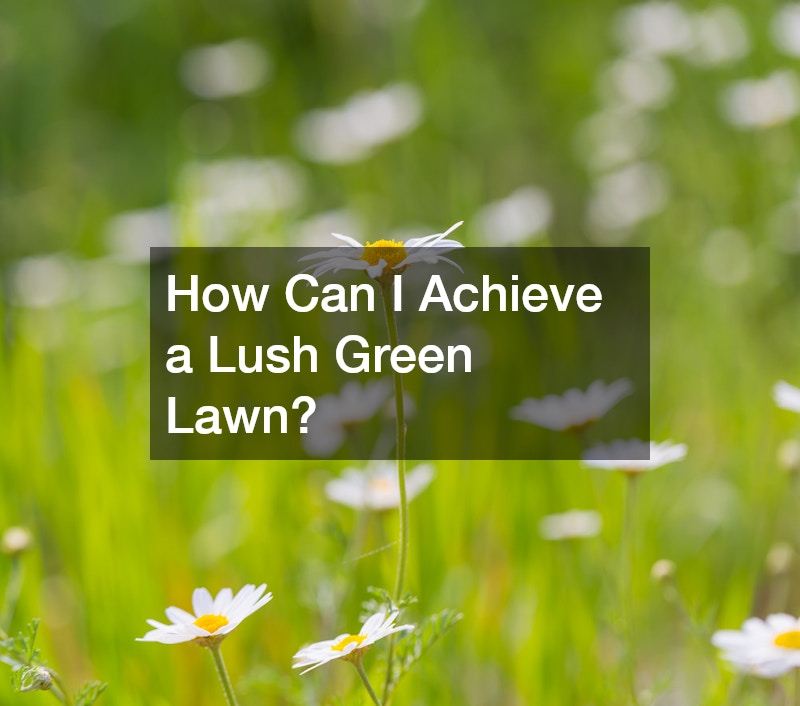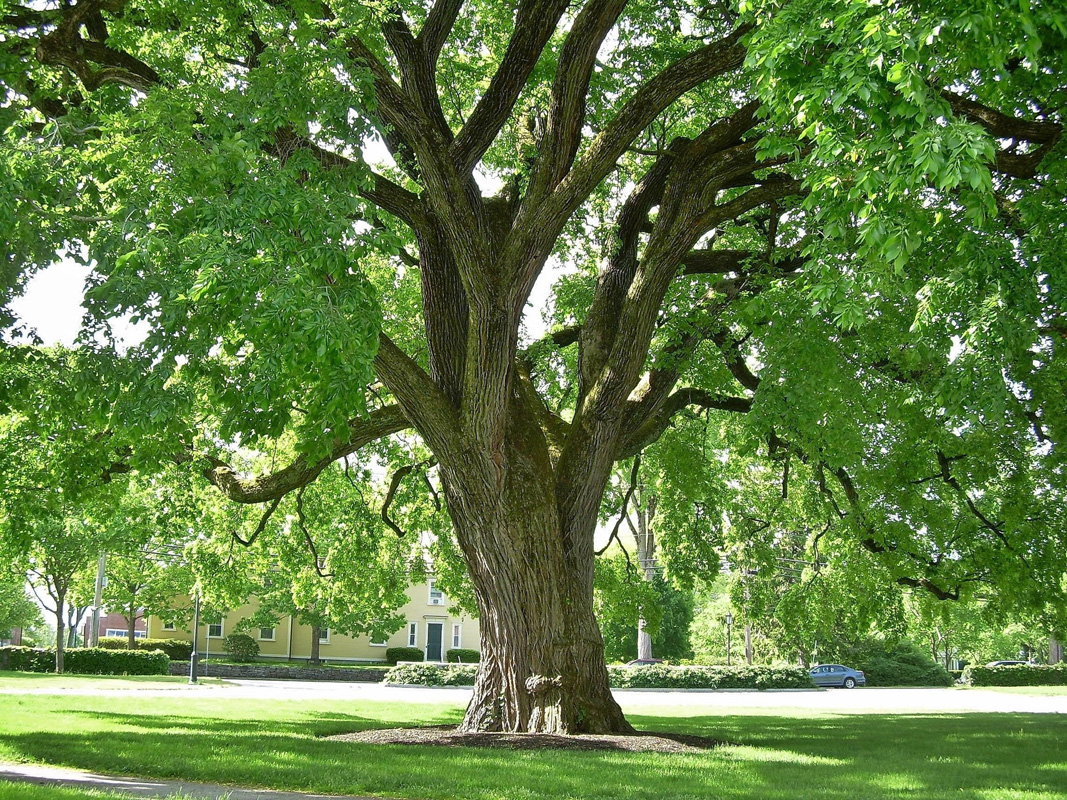Transforming your lawn into a space you truly love involves a combination of thoughtful landscaping practices, proper maintenance, and creative design. A well-maintained lawn not only boosts curb appeal but also creates a welcoming environment for relaxation, play, and entertaining. Whether you’re starting from scratch or enhancing an existing lawn, this guide will provide the knowledge and inspiration you need to succeed.
Landscaping goes beyond simply mowing your grass or planting a few flowers—it’s about creating an outdoor space that reflects your personal style and meets the practical needs of your household. A beautiful lawn can serve as a serene retreat, a lively gathering place, or even a haven for local wildlife. Achieving this balance requires attention to detail, from maintaining healthy soil to incorporating design elements like retaining walls, pavers, and even deer fencing materials for added functionality and beauty.
In this article, we’ll explore answers to the most common lawn care questions to help you overcome challenges like weeds, pests, and diseases. We’ll also dive into advanced landscaping techniques, such as hardscaping services and irrigation systems, that can elevate your outdoor space. Along the way, we’ll share tips on enhancing biodiversity, managing seasonal maintenance, and integrating creative designs to turn your lawn into a source of pride.
By the end of this guide, you’ll have the tools and insights to truly love your lawn—not just for its aesthetic appeal but for the joy and relaxation it brings to your life. Whether you’re looking for practical advice or design inspiration, this comprehensive resource is your roadmap to a lush, healthy, and inviting lawn.
1. How Can I Achieve a Lush Green Lawn?

1.1 Understanding Soil Health
Healthy soil is the foundation of a vibrant lawn. Testing your soil’s pH and nutrient levels ensures your grass has the nutrients it needs to thrive. Poor drainage can stunt grass growth, so consider installing a retaining wall in areas prone to water accumulation. Retaining walls can improve soil structure and prevent erosion, allowing your lawn to flourish.
1.2 Optimal Watering Techniques
Watering deeply but infrequently encourages strong root development. Aim to water your lawn early in the morning to minimize evaporation and fungal growth.
1.3 Fertilization Strategies
Choose a fertilizer that matches your lawn’s needs based on soil test results. Slow-release fertilizers are ideal for steady growth throughout the season.
1.4 Lawn Aeration Benefits
Aeration reduces soil compaction, allowing water, air, and nutrients to penetrate the roots. Regular aeration, especially in high-traffic areas, is essential for maintaining a lush lawn.
1.5 Choosing the Right Grass Seed
Select grass seeds suited to your climate, sunlight exposure, and soil type. Blends that include drought-resistant varieties can help maintain a green lawn during dry spells.
2. What Are the Best Ways to Control Weeds?
2.1 Identifying Common Lawn Weeds
Understanding the types of weeds invading your lawn is crucial for selecting the right treatment. Broadleaf weeds, such as dandelions and clover, are easily recognizable by their wide leaves, while grassy weeds, like crabgrass, blend more seamlessly with your lawn. Sedges, a third category, are distinguished by their triangular stems and thrive in moist areas. Learning to spot these weeds early helps prevent them from spreading.
2.2 Pre-Emergent Herbicides
Pre-emergent herbicides are your first line of defense against weeds that germinate in spring and summer. By applying these products in early spring, you create a barrier that prevents weed seeds from sprouting. Timing is critical—apply too late, and the seeds may already have germinated. Pre-emergent herbicides are particularly effective against grassy weeds like crabgrass, making them an essential tool for maintaining a clean lawn.
2.3 Post-Emergent Solutions
For weeds that have already established themselves, post-emergent herbicides are the best option. These products target actively growing weeds and are available in both selective and non-selective formulations. Selective herbicides kill specific types of weeds while leaving grass unharmed, whereas non-selective herbicides eliminate all vegetation they come into contact with. Spot-treat weeds to minimize damage to your lawn and reduce chemical use.
2.4 Organic Weed Control Methods
If you prefer an eco-friendly approach, organic weed control methods are a great alternative. Solutions like vinegar sprays and boiling water can kill weeds without introducing harmful chemicals into the environment. Corn gluten meal, a natural pre-emergent, inhibits seed germination and adds nutrients to the soil. Additionally, installing deer fencing materials can prevent animals from bringing in weed seeds on their hooves or fur.
2.5 Preventative Landscaping Practices
The best weed control strategy is prevention. A dense, healthy lawn naturally suppresses weeds by crowding out their growth. Overseeding bare spots and maintaining proper mowing and watering practices discourage weeds from taking hold. Incorporating hardscaping services, such as pathways or mulch beds, reduces areas where weeds can grow while enhancing the visual appeal of your yard. Proper mulching not only suppresses weeds but also improves soil moisture retention, benefiting nearby plants.
By combining identification, targeted treatments, and preventive measures, you can keep your lawn weed-free and love your lawn all year long.
3. How Often Should I Mow My Lawn?
3.1 Mowing Frequency Guidelines
How often you mow depends on factors like grass type, growth rate, and the season. During peak growing months, such as spring and early summer, you may need to mow weekly to maintain an optimal height. In cooler months, or during periods of slow growth, mowing every two weeks may suffice. Avoid the temptation to let the grass grow too long; this can lead to uneven cuts and increased stress on the lawn.
3.2 Choosing the Right Mower
The right mower can make all the difference in achieving a clean, even cut. Push mowers are ideal for small lawns, while riding mowers work best for larger properties. Consider investing in a model with adjustable blade heights to accommodate seasonal mowing needs. Electric mowers are a sustainable choice for those looking to reduce their carbon footprint, while traditional gas-powered mowers provide the power needed for tougher jobs.
3.3 Best Mowing Practices
Mowing at the correct height is essential for promoting a healthy lawn. Most grass types thrive when kept between 2.5 and 4 inches tall, though this varies based on species. Never cut more than one-third of the grass blade in a single mowing session, as this can shock the plant and weaken its root system. Alternating your mowing pattern—such as mowing north-south one week and east-west the next—prevents soil compaction and ensures an even cut.
3.4 Grass Clipping Management
Many homeowners wonder whether to bag or leave grass clippings on the lawn. Leaving clippings can benefit your lawn by returning valuable nutrients, like nitrogen, to the soil. However, if the clippings are excessively long or wet, they can clump together and smother the grass, so mulching them with a mower attachment is a better option. Bagging clippings may be necessary if your lawn has been treated with herbicides or is heavily infested with weeds.
3.5 Seasonal Mowing Adjustments
Adapting your mowing schedule and practices to the seasons is crucial for maintaining a healthy lawn. In spring, frequent mowing helps manage rapid growth, while in summer, higher cuts reduce stress from heat and drought. As autumn arrives, lower the mower height slightly to prevent fungal growth and prepare the lawn for winter dormancy. During winter, avoid mowing altogether unless unseasonably warm weather causes new growth.
Regular mowing not only improves your lawn’s appearance but also its health, ensuring it remains a space you can enjoy and be proud of. With the right tools, techniques, and timing, you can achieve a perfectly manicured lawn that you’ll love for years to come.
4. What Irrigation System Is Best for My Lawn?

4.1 Types of Irrigation Systems
A professional local landscaper can help you choose the right system for your lawn. Options include sprinkler systems for broad coverage and drip irrigation for targeted watering.
4.2 Setting Up Automatic Timers
Automatic timers take the guesswork out of watering schedules and help conserve water.
4.3 Drip vs. Sprinkler Systems
Drip systems are ideal for precise watering, while sprinklers cover larger areas efficiently.
4.4 Water Efficiency Tips
Avoid overwatering by using rain sensors and adjusting irrigation schedules based on weather conditions.
4.5 Maintenance of Irrigation Systems
Regularly inspect your irrigation system for leaks or clogged emitters to maintain efficiency.
5. How Do I Prevent Lawn Diseases?
5.1 Common Lawn Diseases
Fungal diseases like brown patch and dollar spot can wreak havoc on your lawn if left untreated.
5.2 Disease Prevention Techniques
Promote good air circulation by mowing at the proper height and avoiding overwatering.
5.3 Managing Thatch Buildup
Excess thatch can harbor pests and diseases. Aeration and dethatching keep thatch levels in check.
5.4 Fungicide Use and Safety
When necessary, apply fungicides carefully, following label instructions to protect both your lawn and the environment.
5.5 Importance of Lawn Diversity
A diverse lawn with mixed grass species is more resilient to diseases and pests, helping you love your lawn year-round.
6. What Are Effective Pest Control Methods for Lawns?

6.1 Identifying Lawn Pests
Common pests like grubs, chinch bugs, and armyworms can cause significant damage.
6.2 Biological Pest Control
Encourage beneficial insects, such as ladybugs and predatory beetles, to keep pest populations in check.
6.3 Chemical Pest Control Options
Professional insect control services offer targeted treatments to eliminate pests without harming beneficial organisms.
6.4 Encouraging Beneficial Insects
Planting flowers and herbs attracts beneficial insects that naturally control pests.
6.5 Seasonal Pest Management
Stay vigilant during peak pest activity seasons to address issues promptly.
7. How Can I Create Stunning Lawn Edges?
7.1 Tools for Edging
Invest in high-quality edging tools to create clean, precise lines along walkways and flower beds.
7.2 Edging Techniques
Techniques like trench edging and using pavers add visual appeal and keep grass from encroaching on other areas.
7.3 Edging Material Options
Options range from metal and plastic to natural stone, depending on your aesthetic and budget.
7.4 Artistic Edging Ideas
Get creative with curved edges or patterns to give your lawn a unique look.
7.5 Maintaining Clean Lawn Edges
Regular maintenance, including trimming and weeding, keeps edges looking sharp.
8. What Can I Do to Enhance Lawn Biodiversity?
8.1 Planting Native Grasses
Native grass species are well-suited to your climate and require less maintenance.
8.2 Incorporating Wildflowers
Adding wildflowers boosts biodiversity and attracts pollinators.
8.3 Utilizing Companion Planting
Pairing plants that benefit each other enhances growth and deters pests.
8.4 Benefits of Diverse Habitats
Diverse plantings create habitats for birds, insects, and other wildlife.
8.5 Encouraging Pollinator Activity
Purchasing plants from a local tree nursery ensures they are well-adapted to your region and attract pollinators effectively.
9. How Do I Prepare My Lawn for Different Seasons?

9.1 Spring Lawn Preparation
Raking, aerating, and fertilizing in spring set the stage for a healthy growing season.
9.2 Summer Lawn Care Tips
Prevent heat stress by watering deeply and applying grub control to keep root-damaging pests at bay.
9.3 Autumn Maintenance Routines
Aerate and overseed in autumn to repair summer damage and prepare for winter.
9.4 Winter Preparation Strategies
Protect your lawn during winter by reducing foot traffic and applying a layer of mulch.
9.5 Year-Round Lawn Care Schedule
Following a seasonal care schedule ensures your lawn stays vibrant and healthy all year.
10. What Are Some Designing Tips for a Visually Appealing Lawn?
10.1 Symmetry and Balance in Lawn Design
Create a balanced design by grouping plants and features symmetrically for visual harmony.
10.2 Color Theory and Lawn Aesthetics
Incorporate a mix of colors in flowers and foliage to add visual interest.
10.3 Landscape Lighting Ideas
Strategic lighting highlights focal points and extends the usability of your lawn into the evening.
10.4 Hardscaping Integrations
Incorporate landscape design elements like stone pathways or patios to enhance functionality and beauty.
10.5 Creating Focal Points in Your Lawn
Install a water feature, sculpture, or unique planting arrangement to draw the eye and enhance your space.
Creating a lawn you love involves combining thoughtful care with strategic design. By following these landscaping tips and addressing common lawn care challenges, you can cultivate a space that is both beautiful and functional. Whether it’s installing a retaining wall, incorporating pavers for edging, or selecting new plants after tree removal, every effort you make brings you closer to a lawn you can be proud of. With regular care, creativity, and the right tools, you can truly love your lawn for years to come.






